Runowo Pomorskie 2024-11-09
Runowo Pomorskie Railway Station.
Geographic coordinates: 53.555N 15.529E. Elevation 82 m (269.03 ft). Address: Kolejowa Street 1, 73-151 Runowo Pomorskie.
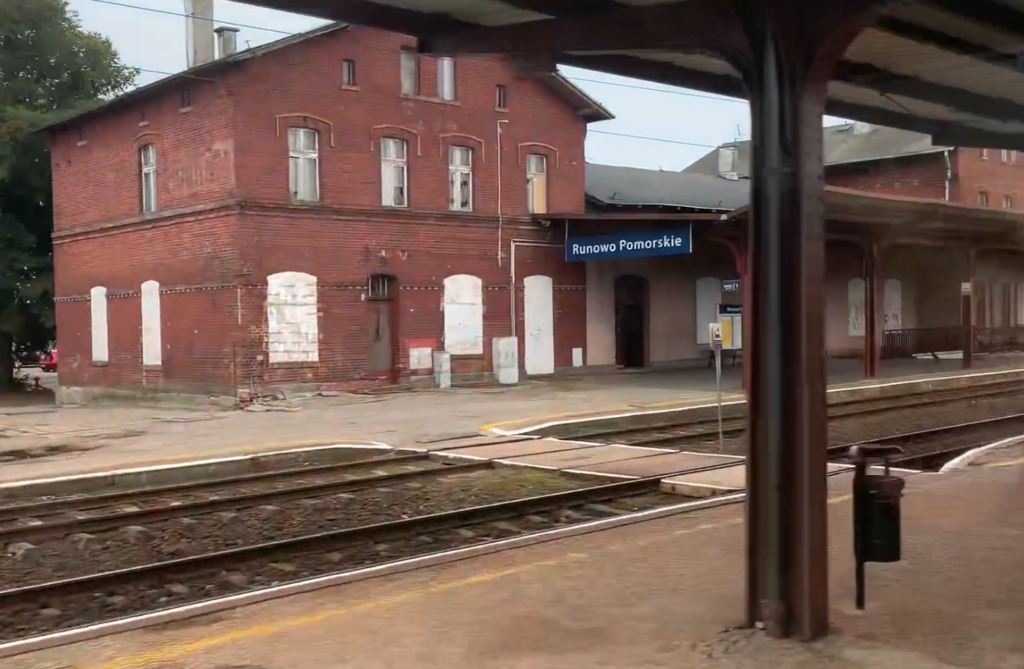
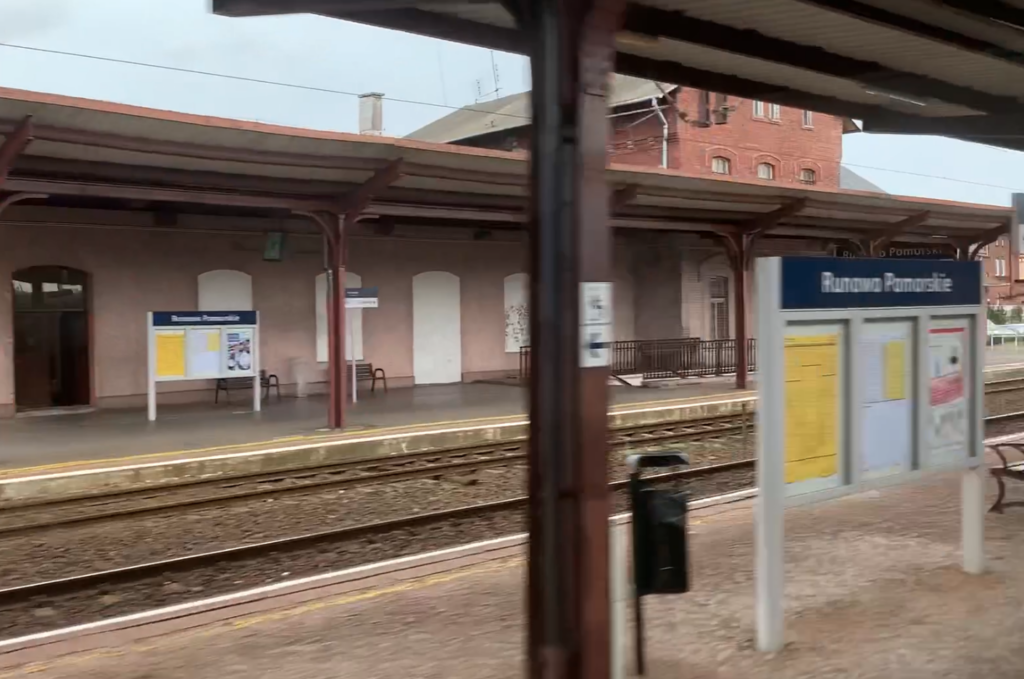
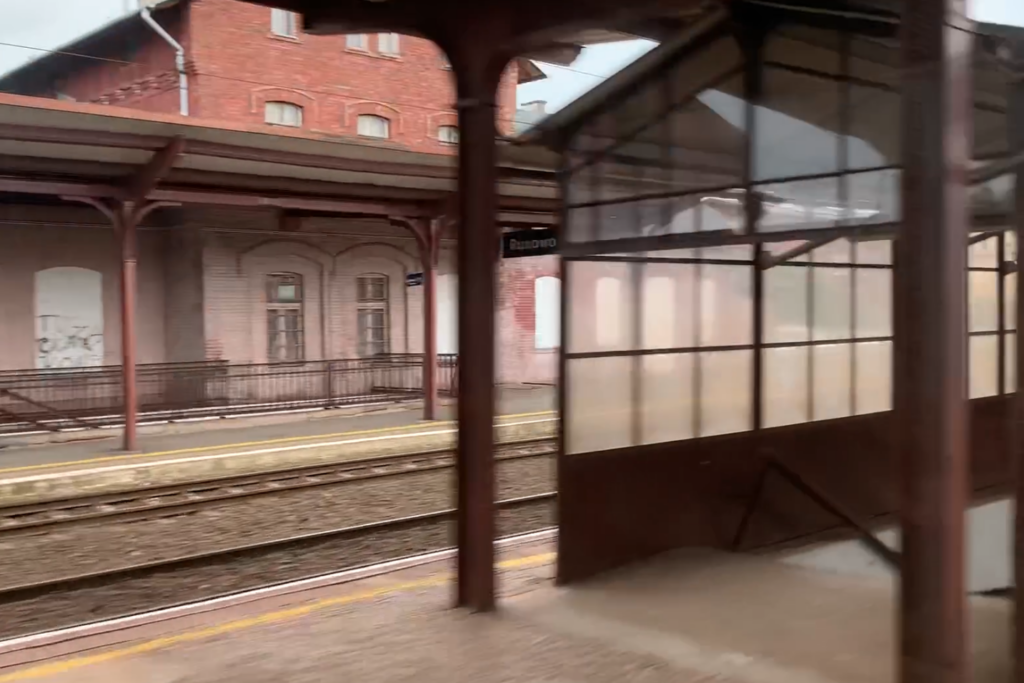
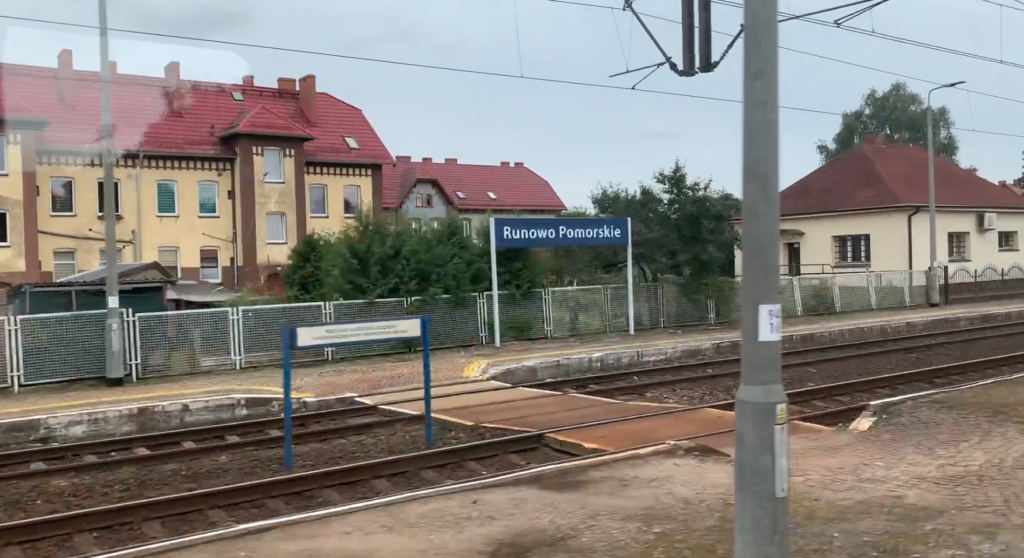
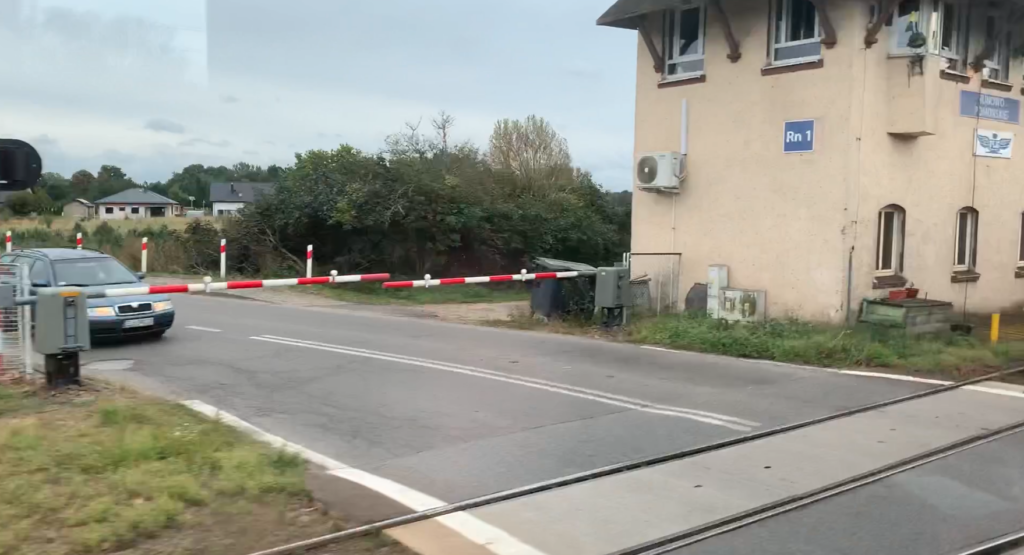
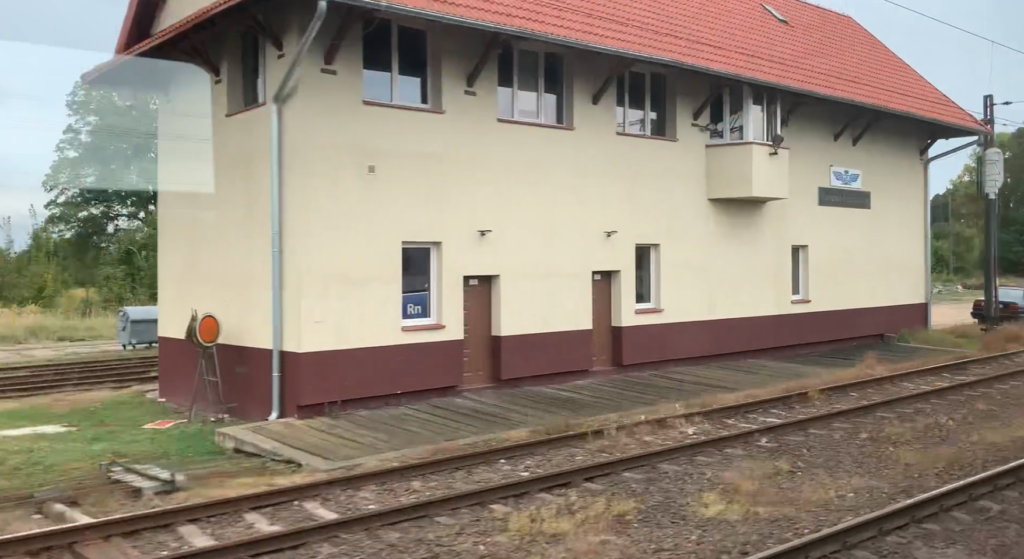
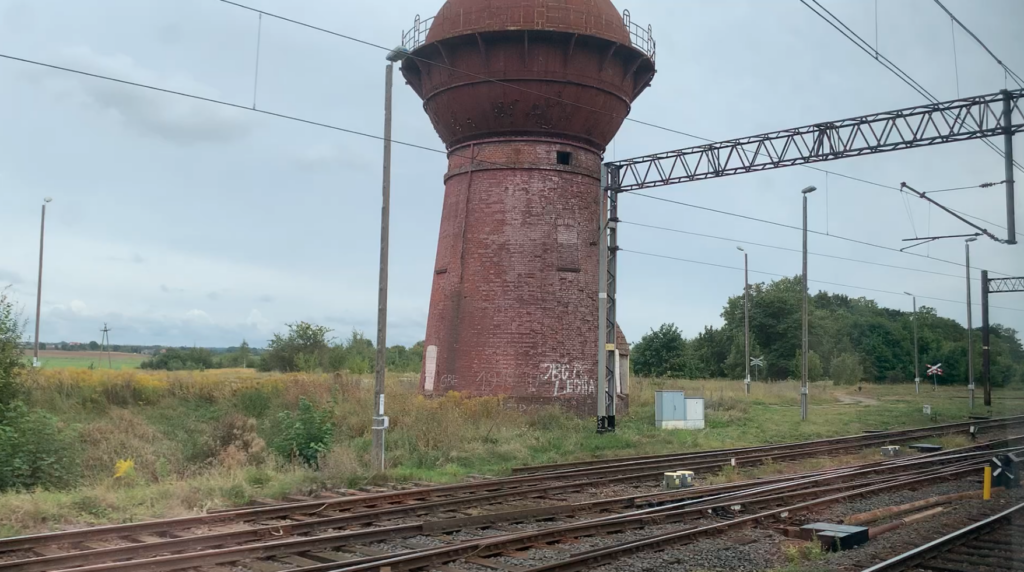
The village of Runowo Pomorskie is a village in Poland, in the West Pomeranian Voivodeship, in the Łobez County, in the Węgorzyno commune. The village of Runowo Pomorskie is practically adjacent to the village of Węgorzyno. The village was created due to the railway line running through this area and was inhabited first by construction workers, and then mainly by railway employees and their families.
The first train at the Runowo Pomorskie station appeared on June 1, 1859. In 1873, a new railway line Runowo Pomorskie – Szczecinek was launched, as a result of which the station gained the rank of a railway junction.
The Runowo Pomorskie station is located at 288.718 km, LK No. 202 Gdańsk Główny – Stargard and at 149.365 km LK No. 210 Chojnice – Runowo Pomorskie, i.e. the end of the line. Interestingly, LK No. 202 leaving the Runowo Pomorskie station towards the Łobez and Świdwin stations (to the north), after the viaduct over the valley changes from a double-track line to a single-track line.
The first name of the station was the Germanic name Ruhnow. After World War II, as a result of the decisions of the greats of this world, Pomerania was annexed to Poland, including Runowo Pomorskie. In 1945, the name was changed to Runów nad Golnicy, but already in 1946, the name was established as Runowo Pomorskie.
When Runowo Pomorskie station became a railway junction, it developed dynamically. A locomotive shed and a water tower were built. The station building was expanded. A tunnel for passengers was built and roofs were installed on both platforms. The tunnel has lighting, and the floor and walls are covered with ceramic tiles. On Platform 1, the roof adjoins the station building and the entrance to the tunnel was placed under this roof (only one staircase). Platform 1 is single-edged and approximately 400 m long. The platform surface is made of various materials; pavement tiles, stone cubes of various sizes, and even asphalt. Since the tunnel exit on Platform 2 is halfway along, the roof consists of two parts. The tunnel exit on Platform 2 is covered with a glass shelter and the stairs are to the south and north. The roof is made of a riveted steel structure, and currently the roof is made of trapezoidal sheet metal. The last renovation of the shelter was carried out in 2010. Platform 2 is 345 m long, 0.30 m high, under the rail heads. The surface is very diverse; cobblestones (different sizes), pavement tiles and also ground surface (grass). Access to the platforms, in addition to the tunnel, is also provided by two passages, which were used for postal carts.
The current station building is the result of expansion at the beginning of the 20th century. The building is multi-body, covered with a roof with a large slope. The building contained ticket and luggage offices, a restaurant, a luggage room, and a post office. Until 2006, the ticket office was open 24 hours a day. In the period 2006-2016, the ticket office was open only during the day; 6:00 – 18:45. In 2016, the ticket office was closed. Tickets can be purchased online or on the train. In the building, a significant number of windows (on the ground floor) and doors were bricked up so that the interior rooms would not be destroyed by vandals.
There were two water towers at the station. The first tower was located near the locomotive shed and was dismantled around 2020. The second tower is located in the northern part of the station. This is an unusual tower because it has a spherical tank made of steel, riveted and is not covered. Similar water tanks are located in Poland only in Korsze and Dąbrówno. The tower is equipped with curved ladders placed on the lower and upper parts of the tank, which slide along guides and could be used to reach any place in the tank. There is a footbridge around the tank. The base of the tower is made of red brick. Initially, the tower stood between the tracks of LK No. 202 and LK No. 210. However, after the route of LK No. 210 was changed, it was located on the eastern side of both railway lines.
Apartment blocks for railway workers and their families were built on Kolejowa Street. Most of them still stand today and are used for their intended purpose.
The last major expansion of the station took place during World War II. The track system on the western side of the station was expanded, as well as in the LK No. 210 arch. The station had a hump, storage yards, and additional coal entanglements. The number of railway workers, especially locomotive workers, was increased. Residential barracks were built for the additional workers, which were demolished after the war.
The fighting in 1945 did not destroy the Runowo Pomorskie station, unlike the neighboring Węgorzyno station.
Currently, the locomotive shed is preserved in very good condition. All gates have been renovated and the roof has been repaired and covered with roofing felt. The glazing is complete. The locomotive shed has seven stations. The turntable is functional and maintained in very good condition. The workshop building and the water tower adjacent to the locomotive shed have been demolished. The area is lit and the grass is mowed.
There are two signal boxes at the station. Signal box “Rn” on the north side and “Rn1” on the south side. Signal box “Rn1” also serves the rail-road crossing along Węgorzyńska Street. Currently (2024) there are shape and light semaphores at the station. Entry semaphores and warning shields are light. Near the LK No. 210 arch, on the former station level, there is the “Runowo” transformer substation of electric traction for LK No. 202.
According to the PKP classification, it has the category of a local station. In recent years, the number of passengers served has increased and reached 400 people per day. This was due to the general renovation of LK No. 210 and the launch of more connections, especially on the distance to Szczecinek and Stargard. On November 7, 2024, 39 passenger trains departed from the Runowo Pomorskie station. It was possible to depart to the following stations: Białystok, Gdańsk Główny, Goleniów, Koszalin, Łobez, Miastko, Olsztyn Główny, Słupsk, Szczecin Główny, Szczecinek.
Railway Line No. 202 Gdańsk Główny – Stargard.
LK No. 202 Gdańsk Główny – Stargard runs through Runowo Pomorskie station, which stretches in the northern part of Poland, in the latitudinal direction and runs through the Pomeranian Voivodeship and the West Pomeranian Voivodeship. LK No. 202 has a length of 334.363 km. The line is electrified with 3 kV DC. The maximum speed of the train is 140 km/h. The line is single-track and double-track. Launch of the railway line; 1859.06.01 Stargard – Koszalin. 1869.07.01 Koszalin – Słupsk. 1870.09.01 Słupsk – Gdańsk Główny. Construction of the second track; 1909, Lębork – Słupsk. 1909, Białogard – Runowo Pomorskie. 1902, Runowo Pomorskie – Stargard. In 1945, the second track was dismantled by the Soviets. 1953, Runowo Pomorskie – Chociwel. 1955, Chociwel – Ulikowo. By 2024, it had not been possible to rebuild the second track on the entire LK No. 202. Electrification was carried out in stages; 1969.09.13 Gdańsk Główny – Gdynia Główna. 1969.10.19 Rumia – Wejherowo. 1989.09.06 Wejherowo – Słupsk. 1988.12.02 Koszalin – Słupsk. 1988.06.30 Białogard – Koszalin. 1987.12.15 Świdwin – Białogard. 1987.07.15 Runowo Pomorskie – Świdwin. 1986.12.16 Stargard – Runowo Pomorskie.
Railway Line No. 210 Chojnice – Runowo Pomorskie.
Railway Line No. 210 Chojnice – Runowo Pomorskie lies entirely within the territory of Poland. The length of the line is 150.402 km. The track gauge is 1435 mm. Maximum speed is 120 km/h. The line was double-track along its entire length, but currently on the Czarne – Szczecinek section it is single-track. One track was dismantled by the Muscovites in 1945, along its entire length, and taken to Moscow. The track was recreated. LK No. 210 is not electrified, because the line was not important for the Polish Economy, although it is listed as a line of national importance. The line runs through the Pomeranian and West Pomeranian Voivodeships, on the route; Chojnice – Szczecinek – Złocieniec – Drawsko Pomorskie – Runowo Pomorskie. The line is used for passenger and freight traffic.
Written by Karol Placha Hetman
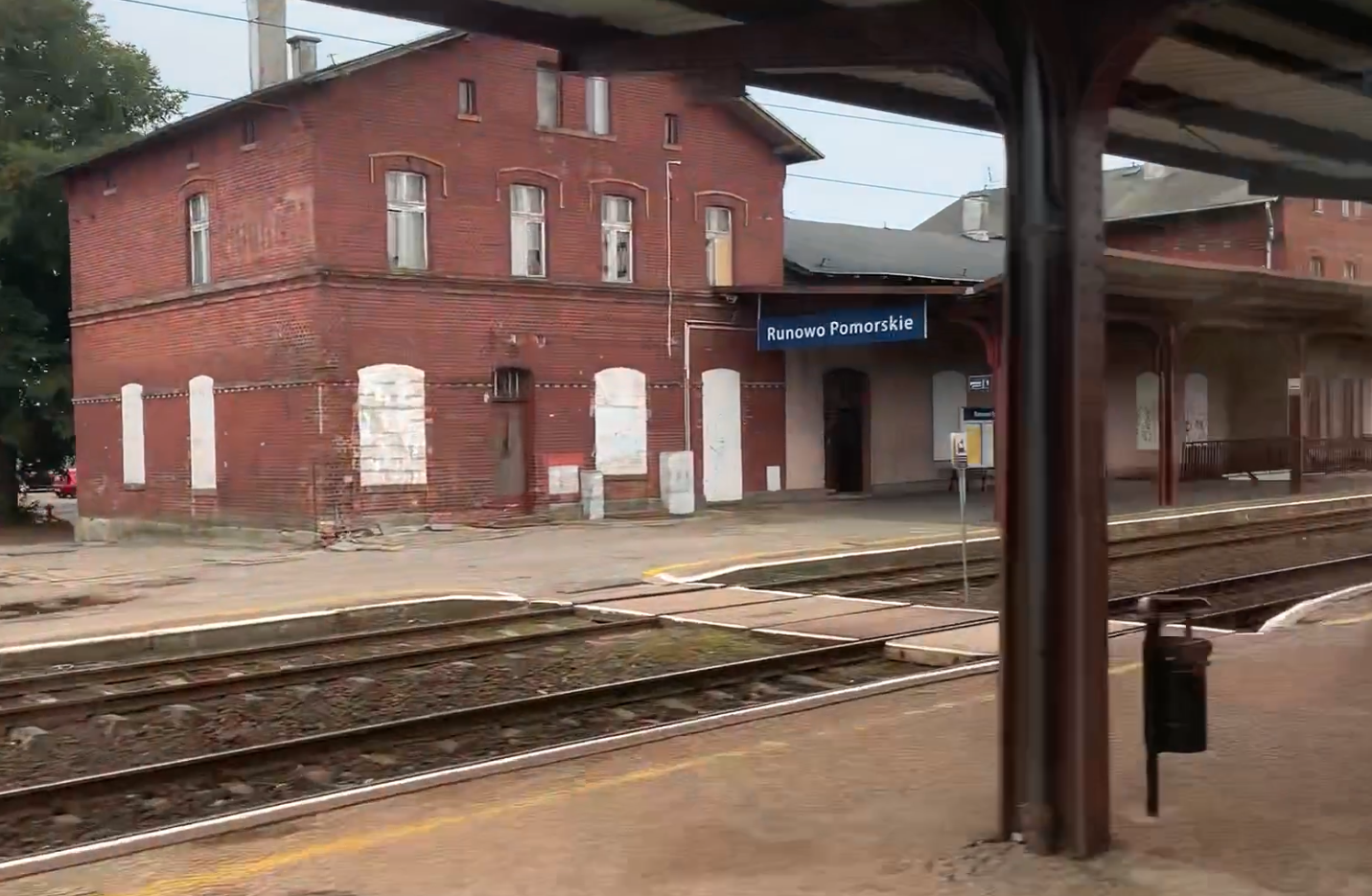
Leave a Reply
You must be logged in to post a comment.